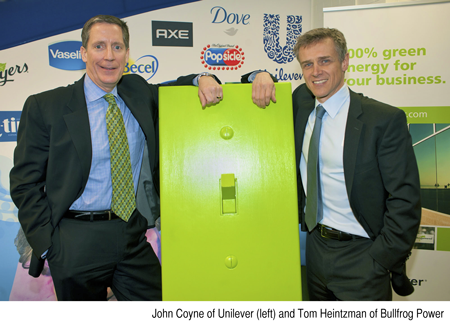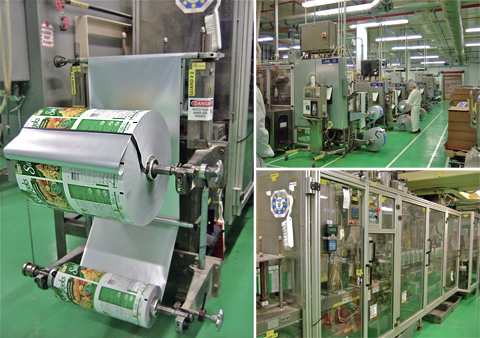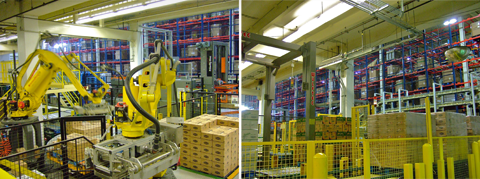 Unilever has been the number one Food & Beverage company on the Dow Jones Sustainability Index for 12 consecutive years. Through Bullfrog Power, Unilever recently became the largest commercial purchaser of renewable energy in Canada at 59,000 MWh per year. What is Unilever’s sustainability strategy and why do they do it? To find out, I took a tour of their Brampton plant and talked to John Coyne, Vice President and General Counsel of Unilever Canada.
Unilever has been the number one Food & Beverage company on the Dow Jones Sustainability Index for 12 consecutive years. Through Bullfrog Power, Unilever recently became the largest commercial purchaser of renewable energy in Canada at 59,000 MWh per year. What is Unilever’s sustainability strategy and why do they do it? To find out, I took a tour of their Brampton plant and talked to John Coyne, Vice President and General Counsel of Unilever Canada.
As one of the largest consumer products companies in the world, Unilever has a large portfolio of high profile brands. In Canada, the brands include icons such as Ben & Jerry’s, Breyers, Degree, Dove, Hellmann’s, Klondike, Knorr, Lipton, Skippy, Slim-Fast, and Vaseline.
Like other companies in the consumer packaged goods space, climate change could have a huge impact on Unilever. Agriculture, raw materials, and water usage can all be affected by changes in climate. Waste management, supply chain management, energy usage, and greenhouse gas emissions may also be affected and carry with them regulatory risks, reputational risks, and litigation risks. Unilever has been taking proactive steps on sustainability to gain a leadership position among their industry peers.
What is Unilever doing on sustainability? At a recent press event, Unilever announced that they are bullfrogpowering all of their manufacturing facilities and offices in Ontario—accounting for 90 per cent of its Canadian operations—with locally sourced renewable power. It will reduce its carbon dioxide emissions footprint by approximately 7,544 tonnes annually.

Through the agreement, Bullfrog Power‘s generators inject renewable electricity onto the electricity grid to match the amount of power Unilever’s bullfrogpowered facilities use. Currently, in Ontario, Bullfrog’s electricity comes only from local wind and hydro facilities that have been certified as low impact by Environment Canada under its EcoLogoM program—instead of from polluting sources like coal, oil, natural gas and nuclear. Bullfrog Power uses the collective demand of its customers to support the development of new renewable generation in Canada. To date, five new wind projects have been commissioned in Canada to meet the demand of the growing community of bullfrogpowered homes and businesses.
“We want to help lead by example and an important part of our sustainability strategy is to lessen our environmental impact to the benefit of our consumers and our communities,” said John Coyne of Unilever Canada. “We’ve set aggressive emissions reduction targets with respect to our facilities. Supporting green electricity through Bullfrog Power is a significant step toward achieving our goals.”
The Unilever Sustainable Living Plan, which was launched in November 2010, aims to halve the environmental footprint of the manufacture and use of its products by 2020. Choosing Bullfrog Power’s green electricity supports Unilever’s overall plan to reduce the company’s greenhouse gas emissions by 50 per cent (based on 2008 levels) by 2020, and sourcing 40 per cent of Unilever’s energy requirements from renewable sources by 2020. Other environment-based goals set out in the plan include sourcing 100 per cent of its agricultural raw materials sustainably, halving the waste associated with the disposal of its products, and halving the water associated with consumer use of its products by 2020.

“Bullfrog Power is proud to be working with Unilever Canada to reduce its environmental impact,” said Tom Heintzman, President of Bullfrog Power. “We also look forward to partnering with Unilever Canada and its bullfrogpowered brands to help ignite dialogue about sustainable lifestyle choices in homes across Canada.”
Why does Unilever do it? As I toured Unilever’s facilities in Brampton Ontario, John Coyne told me Unilever does it for the customers, for the environment, and for profits. “When consumers think about our brands and the sustainability messages around our brand, we think they will look at us, congratulate us for taking a leadership role in this space, and reward us with purchases. That’s how we think our sustainability model will lead us to growth. So getting the word out to the consumers and to our business partners such as Walmart is a very important part of this strategy.”
Now Unilever Canada can make the proud claim to their customers and Walmart that their products—including Becel, Hellmann’s, Knorr and Ben & Jerry’s—are produced using 100 per cent green electricity.

When it comes to measuring greenhouse gas emissions, Unilever sees it as a driver for operational improvements. “All of our facilities are in compliance with the Canadian provincial greenhouse gas reporting regulations coming into force [See: Ontario and B.C. regulations]. It’s not difficult for us to be in compliance because internally we have been tracking our emissions for years anyway. It’s been part of our internal operational improvement process for emissions reduction, water reduction, and waste reduction. All of these areas have seen improvements over the years. That’s why we have been number one on the Dow Jones Sustainability Index for 12 years. We don’t see measuring GHG as primarily a compliance matter. The GHG measurements are used to identify areas for operational improvement and to track our operational efficiency progress.”
How much does it cost Unilever to do the right thing? Coyne has a great answer: “Almost all of our sustainability initiatives have actually resulted in win win win: our customers like us for doing the right thing, the environment likes us for running a sustainable business, and last but certainly not least, our shareholders like us because it reduces costs and increases profits.” Win, win, win indeed.

[…] By Gina-Marie Cheeseman | May 3rd, 2011 0 Comments Unilever, the large British/Dutch multinational company, is going all out when it comes to sustainability, including purchasing renewable energy. Unilever’s goal is to more than double its use of renewable energy to 40 percent of its total energy requirement by 2020. Last month, Unilever Canada announced its agreement with Bullfrog Power to purchase 59,000 megawatt hours (MWh) of renewable energy a year. The agreement includes powering all of Unilever Canada’s Ontario facilities and offices with renewable energy. The purchase agreement makes the company the “largest commercial purchaser of renewable energy in Canada,” according to according to Carbon49.com. […]
[…] transportation-related initiatives were commonly cited. (See case studies on Coca-Cola, Sears, Unilever, […]
[…] Since 2005 Bullfrog pioneers in providing easy solutions for large businesses like Walmart, Unilever, and RBC as well as individuals to power their homes and offices with 100% renewable energy. At […]
[…] Since 2005 Bullfrog pioneers in providing easy solutions for large businesses like Walmart, Unilever, and RBC as well as individuals to power their homes and offices with 100% renewable energy. At […]